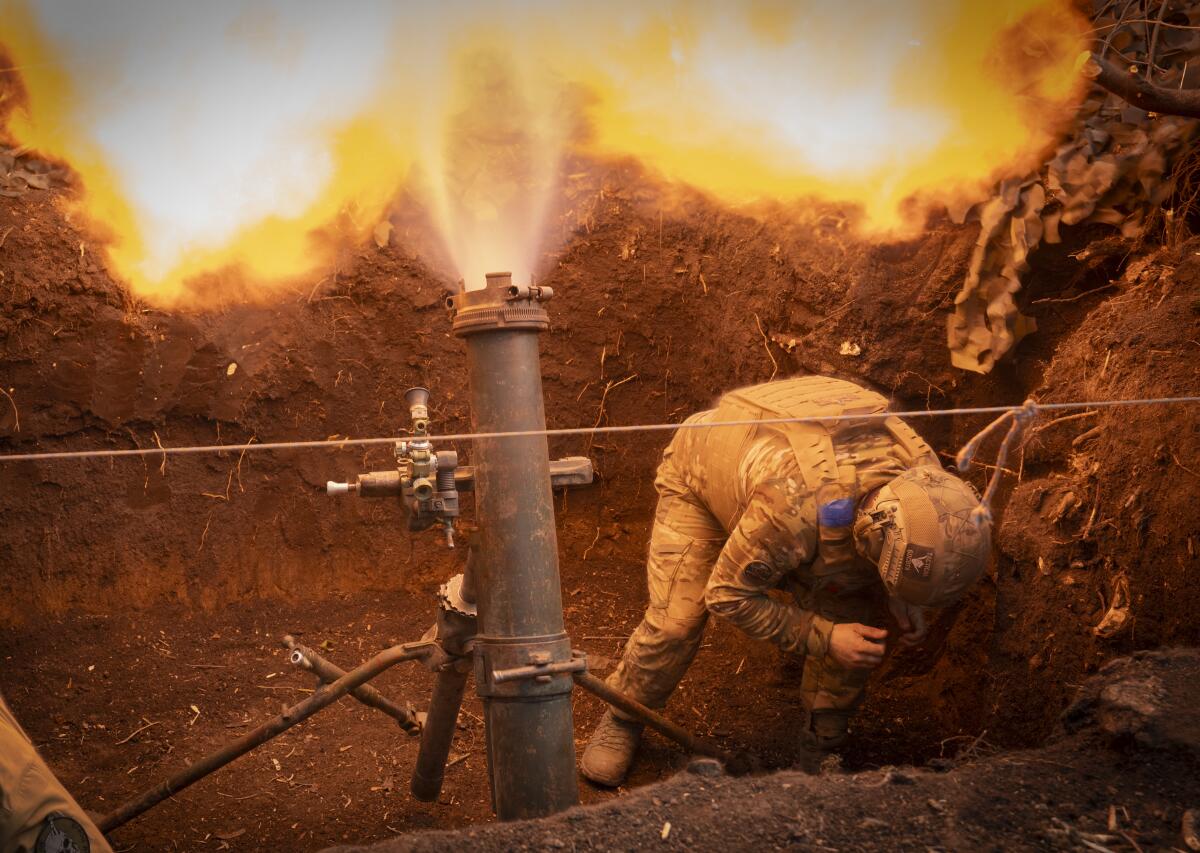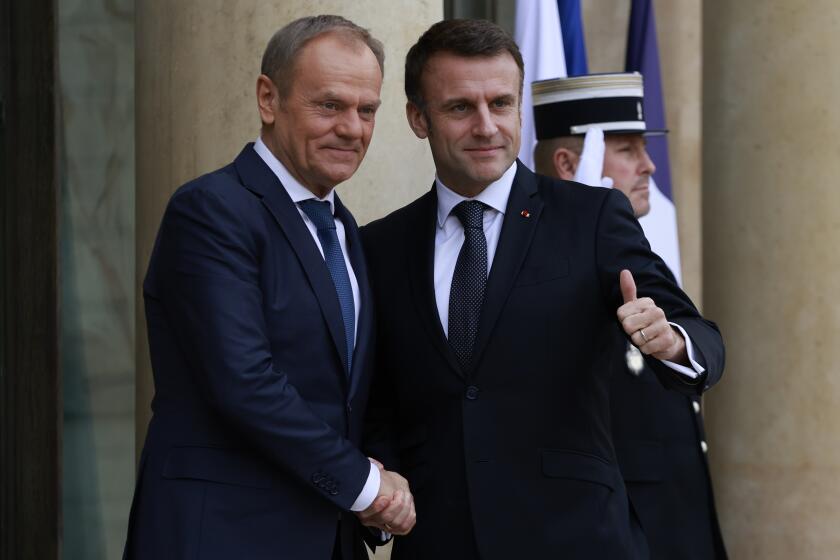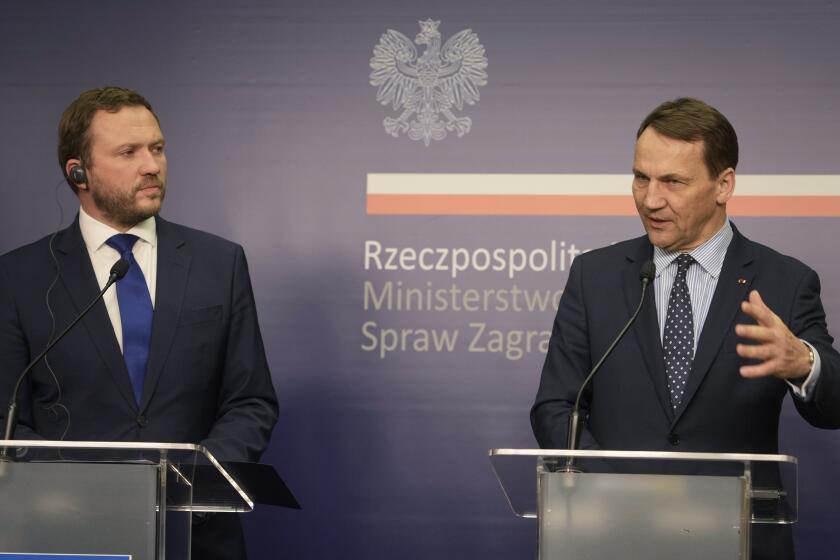EU to boost defense industry, move away from U.S. dependency in the face of Russian threats

- Share via
BRUSSELS — The European Union on Tuesday outlined ambitious plans to boost its defense industry as it responds to the threat posed by Russia’s war on Ukraine and seeks to wean member nations off an over-dependence on the U.S. defense industry.
The plans by the EU Commission focus on streamlining the procurement of arms by the 27 EU states and producing them increasingly within the bloc in a multibillion-dollar pivot away from the United States.
In the first 16 months since the February 2022 start of the Ukraine war, “member states spent more than [$108 billion] on defense acquisitions,” said EU Commission Vice President Margrethe Vestager. “Almost 80% of that was spent outside of the European Union, and the U.S. alone accounted for more than 60% of this spending.
“This is no longer sustainable — if it ever was,” Vestager said.
The need for some strategic independence from the EU’s preeminent ally in the North Atlantic Treaty Organization underscores a sense of political estrangement from Washington, which has been reinforced by the strong showing of former President Trump in the presidential campaign and his barbed comments on the level of European defense spending.
Fears grow in Europe that former President Trump could return to power and give Russian President Vladimir Putin a free hand to expand aggression after Ukraine invasion.
For decades, EU nations have slumbered under the protective nuclear cover of the U.S. through the NATO alliance while their defense spending and crisis preparedness withered.
EU Commissioner Thierry Breton, who is a driving force behind a stronger EU defense industry, said it was essential for the bloc to fall back on its own industrial base.
“Will it be bad news for the U.S. defense industry, the Korean defense industry? I don’t know. What we know is that we need to increase our capacity to produce what is needed. And by the way, today we have to be honest, the U.S. cannot provide what is necessary, especially for ammunitions,” Breton said.
Now, with an increasingly assertive Moscow, the need to beef up defense is becoming ever clearer.
“After decades of underspending, we must invest more on defense, but we need to do it better and together,” EU foreign policy chief Josep Borrell said. “A strong, resilient, and competitive European defense industry is a strategic imperative.”
Estonia, Lithuania and Latvia are considered among the most likely targets if Russia one day decides to risk an attack on the NATO alliance.
Russia’s invasion of Ukraine has exposed glaring weaknesses in Europe’s arms manufacturing capacities that were neglected in the wake of the 1989 fall of the Berlin Wall and the promise of a peace dividend in Europe.
So when Kyiv was badly in need of the most elementary ammunition to stave off Russian forces, European nations were unable to deliver what was asked and even promised.
The realization that Trump might return to the White House and undermine support for Ukraine has also focused minds in Europe. EU heavyweights France and Germany have warned that the bloc must do more to protect itself.
And after years of go-it-alone defense strategies that left Europe divided despite high spending, the plan seeks to impose common strategies. The plans now have to be assessed by member states, and will need to be endorsed unanimously.
“Our defense spending goes to too many different weapon systems, primarily bought from outside the EU,” said Vestager. With defense budgets in EU member states rising, “we should invest better, which largely means investing together, and investing European.”
The European Union has decided to open membership negotiations with Ukraine and Moldova, despite Hungarian leader’s opposition.
Under the proposals, the 27 member states will be invited to buy at least 40% of defense equipment together and make sure that 35% of the defense value represents internal trade by 2030.
The plans now go to the member states, where they will be further negotiated.
The war in Ukraine spurred European nations to hike defense spending, and a lot of money is destined for the U.S. defense industry. Germany, for example, announced a $108-billion upgrade of its armed forces, with a big chunk of the funds dedicated to U.S. F-35 fighter jets and transport helicopters.
While production is improving, the EU had aimed to be making 1 million artillery shells annually by now but is only making around half that figure. Officials now say that production could reach 1.4 million shells per year by the end of December.
More to Read
Sign up for Essential California
The most important California stories and recommendations in your inbox every morning.
You may occasionally receive promotional content from the Los Angeles Times.













